Don't wanna be here? Send us removal request.
Text
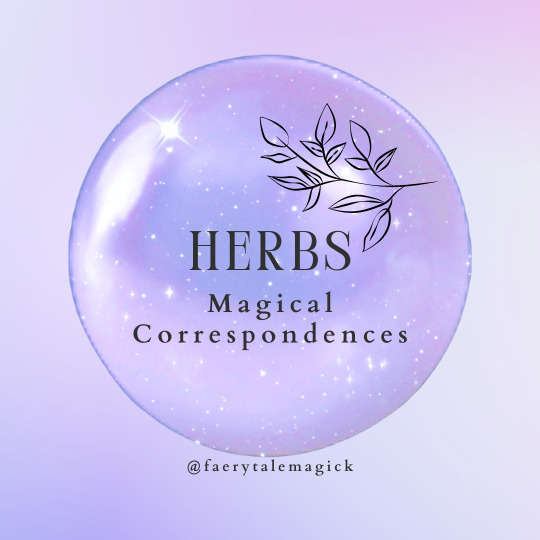
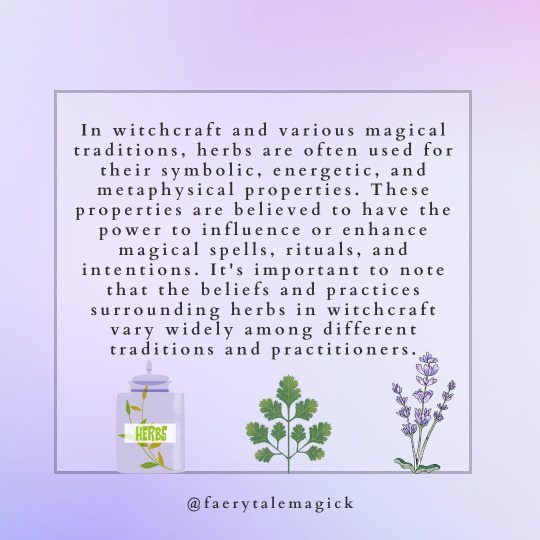
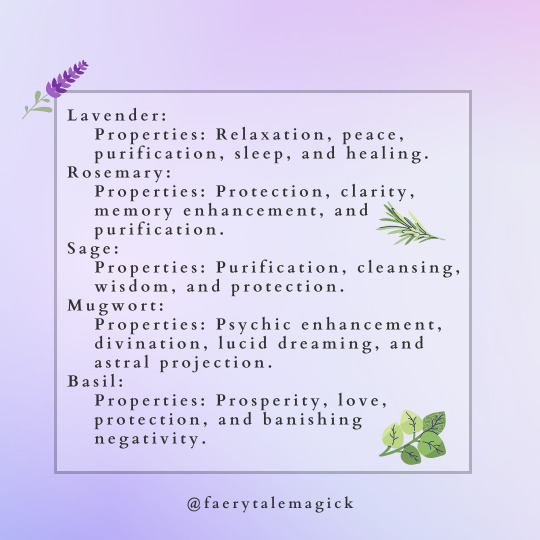
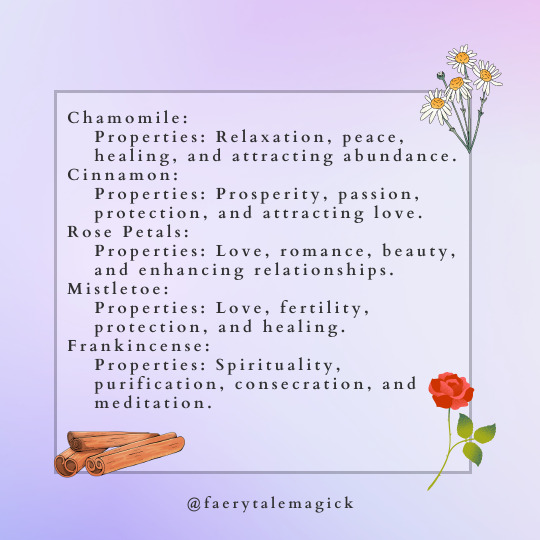
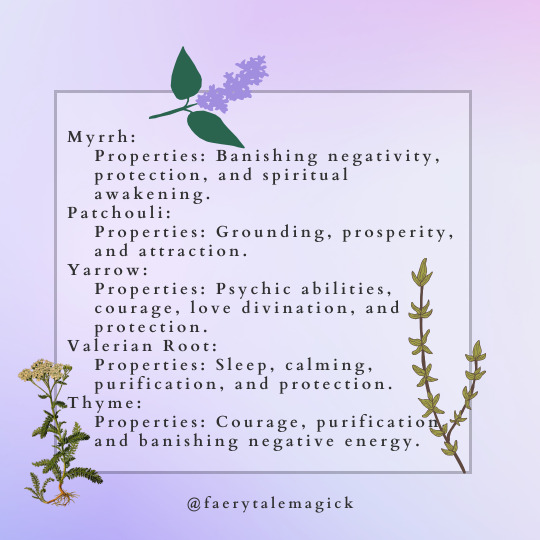
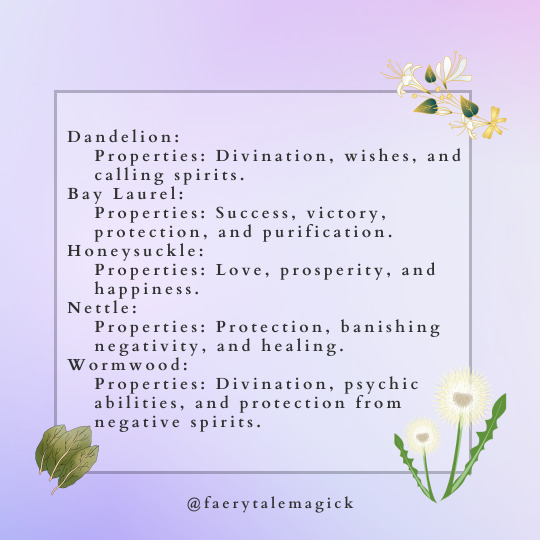
Magical Correspondences for Herbs 🌿🌼
follow @faerytalemagick on insta for more 🌠
#witchcraft#witch#witchesofinstagram#pagan#wicca#magic#witchyvibes#magick#witches#tarot#witchythings#witchy#occult#wiccan#crystals#spirituality#spells#pagansofinstagram#paganism#witchlife#halloween#goth#spiritual#october#greenwitch#spookyseason#divination#witchery#witchaesthetic#herbs
66 notes
·
View notes
Text
Kitchen Staples and Their Properties
If you're any kind of kitchen user, there are a few things that are usually present. Things like bread, cheese, beans, and vinegar are all things that many kitchens keep in stock. So, here is a list of some staples you may have in your kitchen, and what they mean.
Bread: health, abundance, the hearth, kindship
Beans: wisdom in choices, luck, money, divination, prosperity
Butter: peace, friendships/relationships, spirituality
Cheese: goal completion, happiness, moon magic, health
Eggs: feminine/goddess magic, fertility, mysticism
Honey: joy, love, sex, wisdom, lust, purification, health
Milk (Cow's): feminine parenthood/guidance, love, sustenance, spirituality,
Rice: fertility, protection, luck, money, growth
Salt: purification, protection, grounding, cleansing
Sugar: banishing negativity, love, affection, invoking kindness/sweetness
White Vinegar: cleansing, purification, protection
Adding some things together melds their properties! Cooking in butter for your friends can strengthen your relationships with them, and baking bread can bring abundance into your home.
As always, do your research, practice safely, and blessed be!
Support your local witch on Ko-Fi!
3K notes
·
View notes
Text






Magical Correspondences for Herbs 🌿🌼
follow @faerytalemagick on insta for more 🌠
#witchcraft#witch#witchesofinstagram#pagan#wicca#magic#witchyvibes#magick#witches#tarot#witchythings#witchy#occult#wiccan#crystals#spirituality#spells#pagansofinstagram#paganism#witchlife#halloween#goth#spiritual#october#greenwitch#spookyseason#divination#witchery#witchaesthetic#herbs
66 notes
·
View notes
Text
An App Does Not a Master Naturalist Make
Originally posted on my website at https://rebeccalexa.com/app-not-master-naturalist/ - I had written this as an op-ed and sent it to WaPo, but they had no interest, so you get to read it here instead!
I have mixed feelings about Michael Coren’s April 25 Washington Post article, “These 4 free apps can help you identify every flower, plant and tree around you.” His ebullience at exploring some of the diverse ecological community around him made me grin, because I know exactly what it feels like. There’s nothing like that sense of wonder and belonging when you go outside and are surrounded by neighbors of many species, instead of a monotonous wall of green, and that is a big part of what led me to become a Master Naturalist.
When I moved from the Midwest to the Pacific Northwest in 2006, I felt lost because I didn’t recognize many of the animals or plants in my new home. So I set about systematically learning every species that crossed my path. Later, I began teaching community-level classes on nature identification to help other people learn skills and tools for exploring their local flora, fauna, and fungi.
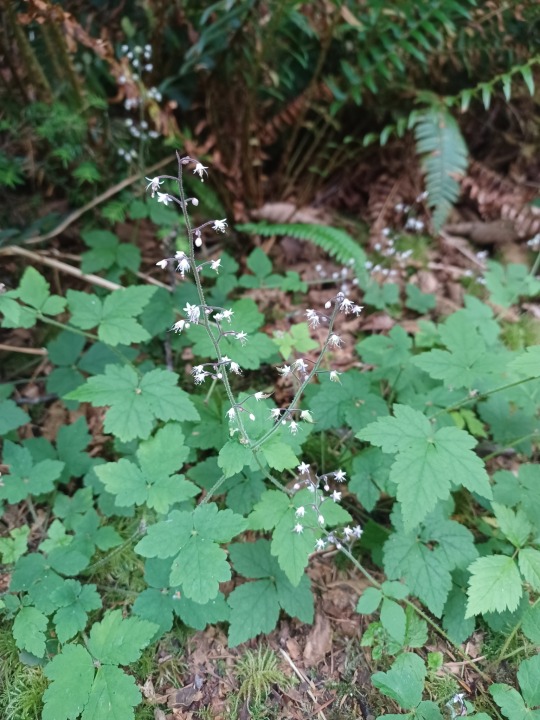
Threeleaf foamflower (Tiarella trifoliata)
Let me be clear: I love apps. I use Merlin routinely to identify unknown bird songs, and iNaturalist is my absolute favorite ID app, period. But these tools are not 100% flawless.
For one thing, they’re only as good as the data you provide them. iNaturalist’s algorithms, for example, rely on a combination of photos (visual data), date and time (seasonal data), and GPS coordinates (location data) to make initial identification suggestions. These algorithms sift through the 135-million-plus observations uploaded to date, finding observations that have similar visual, seasonal, and location data to yours.
There have been many times over the years where iNaturalist isn’t so sure. Take this photo of a rather nondescript clump of grass. Without seed heads to provide extra clues, the algorithms offer an unrelated assortment of species, with only one grass. I’ve gotten that “We’re not confident enough to make a recommendation” message countless times over my years of using the app, often suggesting species that are clearly not what I’m looking at in real life.

Because iNaturalist usually offers up multiple options, you have to decide which one is the best fit. Sometimes it’s the first species listed, but sometimes it’s not. This becomes trickier if all the species that are suggested look alike. Tree-of-Heaven (Ailanthus altissima), smooth sumac (Rhus glabra) and eastern black walnut (Juglans nigra) all have pinnately compound, lanceolate leaves, and young plants of these three species can appear quite similar. If all you know how to do is point and click your phone’s camera, you aren’t going to be able to confidently choose which of the three plants is the right one.

Coren correctly points out that both iNaturalist and Pl@ntNet do offer more information on suggested species—if people are willing to take the time to look. Too many assume ID apps will give an easy, instant answer. In watching my students use the app in person almost everyone just picks the first species in the list. It’s not until I demonstrate how to access the additional content for each species offered that anyone thinks to question the algorithms’ suggestions.
While iNaturalist is one of the tools I incorporate into my classes, I emphasize that apps in general are not to be used alone, but in conjunction with field guides, websites, and other resources. Nature identification, even on a casual level, requires critical thinking and observation skills if you want to make sure you’re correct. Coren’s assertion that you only need a few apps demonstrates a misunderstanding of a skill that takes time and practice to develop properly—and accurately.
Speaking of oversimplification, apps are not a Master Naturalist in your pocket, and that statement —while meant as a compliment–does a disservice to the thousands of Master Naturalists across the country. While the training curricula vary from state to state, they are generally based in learning how organisms interact within habitats and ecosystems, often drawing on a synthesis of biology, geology, hydrology, climatology, and other natural sciences. A Master Naturalist could tell you not only what species you’re looking at, but how it fits into this ecosystem, how its adaptations are different from a related species in another ecoregion, and so forth.
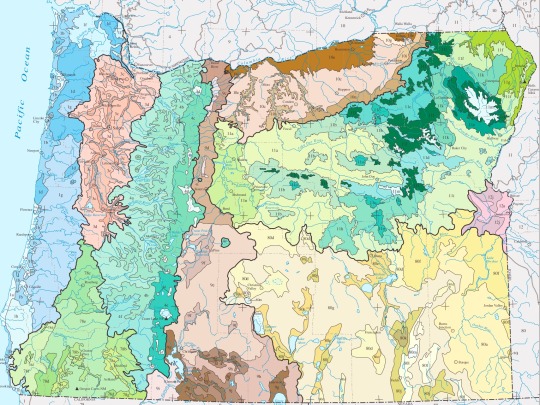
Map showing Level III and IV ecoregions of Oregon, the basis of my training as an Oregon Master Naturalist.
In spite of my criticisms, I do think that Coren was absolutely onto something when he described the effects of using the apps. Seeing the landscape around you turn from a green background to a vibrant community of living beings makes going outside a more exciting, personal experience. I and my fellow nature nerds share an intense curiosity about the world around us. And that passion, more than any app or other tool, is fundamental to becoming a citizen naturalist, Master or otherwise.
Did you enjoy this post? Consider taking one of my online foraging and natural history classes or hiring me for a guided nature tour, checking out my other articles, or picking up a paperback or ebook I’ve written! You can even buy me a coffee here!
638 notes
·
View notes
Text
Drying
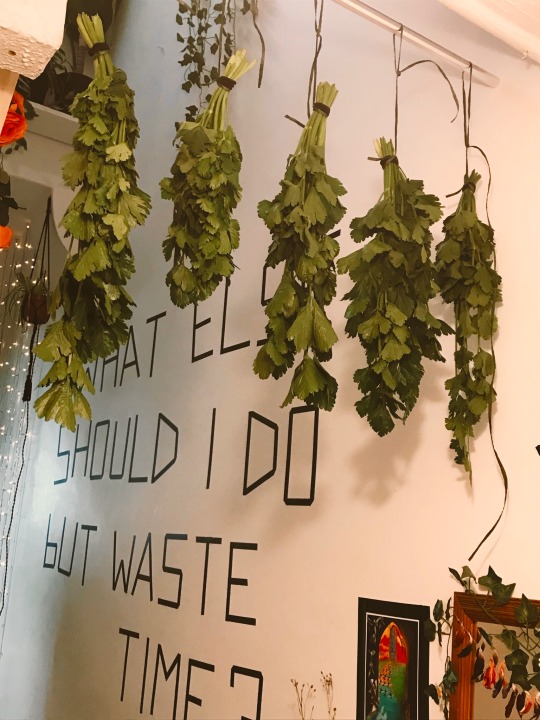
Tie bunches of herbs upside down for drying - in somewhere that gets lots of airflow but no direct sunlight. (This is the only time I don’t moan about my dingy, dark hallway!) These ones are giant flat leaf parsley stems.
10 notes
·
View notes
Text
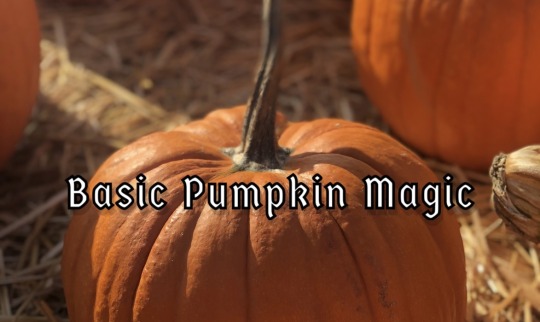
•~• Some Basic Pumpkin Magic •~•
Even though July isn’t even over yet and autumn is not as near as I would like it to be, I wanted to talk about one of my favorite things in the world - pumpkins! I always love when these bad boys come around in the autumn, so to be prepared for the coming autumn months, I thought I’d make a little summary of some pumpkin associations and magic!
Colors
When we think of pumpkins, we tend to think of the color orange, which is associated with attraction, creativity, and new opportunities. But pumpkins can also be found in other colors, such as green, yellow, and white! If you want the general associations of a pumpkin but want to use a different kind of color magic, maybe look into the less iconic but still wonderful varieties of pumpkins.
Pumpkin Associations and Uses
Pumpkins are often associated with abundance and prosperity due to their large size and many, many, seeds. The seeds are also a feature that promotes new life and expansion. Pumpkins also tend to last long periods of time when not disturbed, so the expansion aspect of the seeds can be longer-term as the pumpkin itself can last longer.
Pumpkins are also ruled by the moon and their element is water. Doing spells and rituals regarding the moon and/or water can be amplified by the pumpkin’s natural associations with these things.
Pumpkins are also used to ward off evil and for spirit protection. Carving them into faces is a common tradition and they became used in what we know as a jack-o-lantern as a replacement for the traditional turnip. If you want to double up on the protection aspect, carve a sigil, rune, or other protective symbol into the pumpkin instead of a face.
Which also leads me to the time of year that these are around. Pumpkins are an autumnal plant and are heavily associated with harvest festivals and spiritual festivals. The most well known would be Mabon and Samhain, with our modern day Halloween coming from Samhain, thus the jack-o-lanterns at this time of year outside of the magical community.
Other Magical Uses
Aside from the jack-o-lantern spells, the most obvious and my personal favorite way to use pumpkins is kitchen magic. I have sweet pumpkin tea that I stir clockwise to attract abundance and prosperity. You can also use them in baking, such as a pumpkin pie, or regular cooking, such as pumpkin soups and stews. They work really well with spices. If you’re working on spiritual protection with the pumpkin, using cinnamon to enhance the protection properties. Also cinnamon and pumpkin is one of my all time favorite flavor combinations so it also tastes amazing!
The pumpkin’s physical characteristics can also be used in spells. Carve out your pumpkin and use it as a bowl or container for your spellwork.
And last on this post but definitely not the last way to use it is the drying of its seeds and using the seeds throughout your magical year. As mentioned, these seeds are great for new beginnings, and as they are connected to a moon associated plant, new moon spells and rituals of attracting abundance and new beginnings work really well when adding some pumpkin seeds.
I hope y’all found this helpful and let me know if you want basic breakdown of anything else!
331 notes
·
View notes
Text
Kitchen Witchery 101: How to Use Food as Magick
Food is not only a source of nourishment for our bodies but also a powerful medium for manifestation and healing. As a kitchen witch, you can infuse your cooking with intention and magick to enhance the flavors, aromas, and energy of your meals.
In this article, we'll explore some tips and techniques for using food as magickal tools in your witchcraft practice.
Setting the Mood: Creating a Sacred Kitchen Space
Before you start cooking, it's important to create a harmonious and magickal ambiance in your kitchen. This can be done by smudging the area with sage or palo santo, playing calming music, and incorporating natural elements like crystals or plants. You may also want to set up an altar or a small shrine with magickal tools, symbols, or deity statues that resonate with your cooking intentions.
Choosing Ingredients: Aligning with the Elements
Each ingredient in your recipe carries a unique element and energy that can affect the outcome of your magickal cooking. For example, herbs and spices like basil, rosemary, and thyme are associated with the element of air and are good for mental clarity and communication. Root vegetables like carrots, beets, and potatoes are related to the element of earth and are great for grounding and rooting energy. Fruits like oranges, lemons, and berries are associated with the element of water and can enhance emotional healing and intuition. And hot peppers, garlic, and ginger are related to the element of fire and can add passion, courage, and creativity to your recipes.
Infusing Intentions: Adding Magickal Properties to Your Recipes
Once you've chosen your ingredients, it's time to infuse them with your intentions and magickal energy. This can be done through visualization, chanting, or simple affirmations. For example, you can bless your ingredients by saying "I bless this salt with protection and purification," or "I infuse these tomatoes with love, healing, and prosperity." You can also symbolically charge your ingredients by arranging them in a sacred geometric pattern, such as a pentacle, a spiral, or a flower of life.
Cooking with Intention: Stirring, Chanting, and Blessing
As you cook your meal, keep your intentions and magickal energy flowing by stirring the pot clockwise to attract positive energy and counterclockwise to banish negative energy. You can also chant, hum, or sing a magickal song that aligns with your intentions while cooking. And finally, don't forget to bless and thank your meal before serving, by saying "I thank the spirits of the ingredients for their energy and blessings. May this meal nourish and heal my body, mind, and soul."
Some Simple Kitchen Witch Recipes:
- Prosperity Rice: Boil rice with water, add chopped onions, garlic, and ginger, and sprinkle with green onions. As you stir clockwise, visualize abundance, prosperity, and success flowing into your life. Serve with a green salad or steamed vegetables.
- Love Potion Tea: Boil water in a teapot, add fresh rose petals, cinnamon sticks, and honey, and let it steep for 10 minutes. As you pour the tea, visualize love, passion, and intimacy filling your heart and relationships. Serve with cookies or chocolates.
- Healing Soup: Boil chicken broth with chopped carrots, celery, and herbs like parsley and thyme. As you stir clockwise, visualize healing, peace, and strength entering your body and mind. Serve hot with bread or crackers.
Kitchen witchery is a beautiful and practical way to connect with the spirit of food, nature, and your inner wisdom. By incorporating magickal intention and energy into your cooking, you can transform a mundane activity into a sacred ritual that nourishes your soul and body. So, don't be afraid to experiment with your recipes and let your intuition guide you towards the perfect flavors and ingredients for your magickal meal.
⋆⁺₊⋆ ☾⋆⁺₊⋆ Bon Appétit! ⋆⁺₊⋆ ☾⋆⁺₊⋆

434 notes
·
View notes
Text

I found this very large leaf purslane outside while walking Merlin this morning. I grabbed it so I could plant it in a pot with some other stuff!
Purslane is edible and grows all over the place. It can be smaller than this photo or larger but it is pretty easily identifiable by the way the leaves are tear-drop shaped and the way the stems branch out.
You can eat it raw or you can fry it up with greens and garlic 😋
26 notes
·
View notes
Text
I’m harvesting and drying my 100% organic, grown from seed Yarrow today. Let me know via DMs if you’d like some ☺️

Yarrow // Achillea millefolium
Parts Used: aerial portions, including flower and leaves.
Family: Asteraceae
Other Names: allheal, angel flower, bad man’s plaything, bloodwort, cammock, carpenter’s weed, devil’s mustard, devil’s nettle, devil’s plaything, dog daisy, gordaldo, gordoloba, green arrow, herbe militaris, hierba de las cortadura, knight’s milfoil, milfoil, nosebleed plant, old man’s mustard, old man’s pepper, sanguinary, soldier’s woundwort, squirrel’s taile, stanchgrass, staunchweed, thousand weed, thousand-leaf, thousand-seal, woundwort, yarroway
Native to Europe, Asia, and North America, yarrow is found in temperate regions all over the world.
Actions and Properties:
alterative, anti-fungal, anti-inflammatory, anti-pyretic, antiallergenic, antibacterial, antiseptic, antispasmodic, appetite stimulant, aromatic, astringent, bitter, carminative, circulatory stimulant, diaphoretic, digestant, diuretic, emmenagogue, expectorant, hemostatic, styptic, tonic, vulnerary
Constituents:
Yarrow is rich in essential oil and tannins. Yarrow contains 0.3% to 1.4% volatile oils (azulenes, eugenol, caaryophyllene, humulene, limonene, sabinene, thujone, borneol, and camphor), resin, sesquiterpene lactones, 3-4% tannins, flavonoids (including luteolin, apigenin, kaempferol, rutin, and quercitrin), alkaloids (achilletin, betonicine, stachydrine, trigonelline), alkamides, asparagin, aconitic and isovalerianic acids, selenium, beta-cerotene, proteins, sugars, phenolic acids, and coumarins. Its anti-inflammatory and anti-allergy effects may be associated with the constituent chamazulene. The alkaloid fraction of yarrow has shown evidence of hypotensive effects as well as antipyretic effects. Volatile oils in yarrow may have CNS depressent activity. The constituent Achilleine, an alkaloid, might decrease clotting time.
Yarrow is toxic to horses, dogs and cats
All my info is from this lovely website :)
13 notes
·
View notes
Text
Herbalism 101: Dill
EP. 5

Fun fact! "Dill" comes from an old English word that means "to lull" because it was often used to soothe colicky babies.
Associations: Money, luck
Uses in the kitchen
Most commonly used in Eastern European, Russian, and Middle Eastern cuisines, dill is used in a wide array of food. You most likely think of pickles, which uses the top part of the plant. The leaves or "aerial" part of the plant is used most of the time in cooking. It goes great in acidic and savory foods, as well as with food like salmon and eggs.
Uses in healing
I tend to used the seeds more frequently when it comes to herbalism. I will often chew on a seed or two to help with bad breath. Some people also use the seeds in a tea to help with period cramps.
Uses in witchcraft
Carrying seeds in a small pouch or your pocket will attract luck and money. Similarly, using the herb in cooking with intention will attract the same. Because you can buy it dried for the kitchen, I love using it in spell jars.
Tips for growing at home
Dill is resilient and can grow in most climates in summer. An outdoor pot or garden is best though, because it can get tall. It is a great companion plant for cabbage but not carrots!
Recipe
One of my favorite family recipes is super simple and tasty. Dill dip is something we always have at family functions.
You need:
2 part sour cream
1.5 part cream cheese
1/4 part dried dill
1/4 part garlic powder
Mix and enjoy with Hawaiian rolls !
641 notes
·
View notes
Text
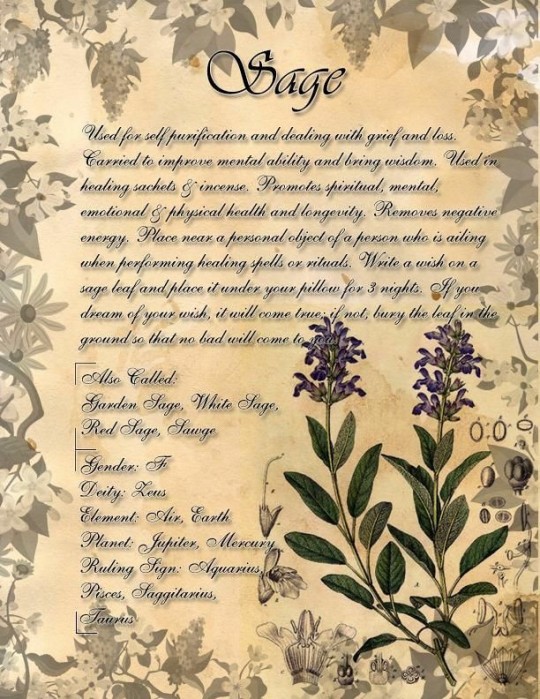




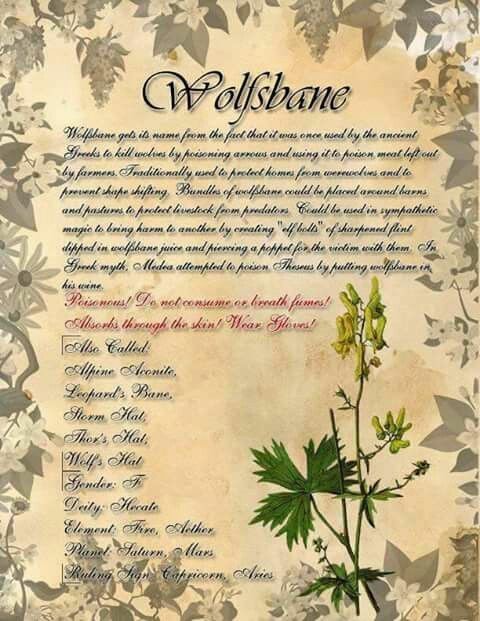




Book of Shadows by Cognima on Deviant Art - 2
361 notes
·
View notes
Text
Magical Powder Recipes
A collection of some of my original magical powder recipes.
All-Purpose Cursing Powder
Bree's Banishing Powder
Clean House Powder
“Eye of Sauron” Revelation Powder
Heal Thy Heart Powder
Hexbreaker Powder
Inspiration Salt
Lucky Day Powder
“Outta My Way” Powder
Peacekeeper Powder
Persuasion Powder
STFU Powder
Traveler’s Luck Powder
Truthfinder Powder
For those of you who may not be able to find herbs locally, here are some online suppliers who consistently have affordable and high-quality products.
Penn Herb Co. - Bulk herbs, spices, and botanicals - including over 400 wildcrafted herbs, gathered from the United States and worldwide. Single ounce packages are available. Excellent source for powders.
Starwest Botanicals - Bulk herbs, spices, oils, and teas. Good amount of organic and Fair Trade products, as well as supplies for holistic medicine and tea-making.
Mountain Rose Herbs - Bulk herbs, spices, and sundries. Also carries organic products and essential oils, and has link to schools that offer courses in herbalism and herbology.
Bulk Apothecary - Bulk herbs, spices, and oils, in addition to materials for the home production of soap, candles, wine, and beer.
For more recipes to fill out your potion kit, you can check out Pestlework: A Book of Magical Powders & Oils. (Available on Amazon and in my shop!)
If you're enjoying my content, please feel free to drop a little something in the tip jar or check out my published works on Amazon or in the Willow Wings Witch Shop. 😊
4K notes
·
View notes








